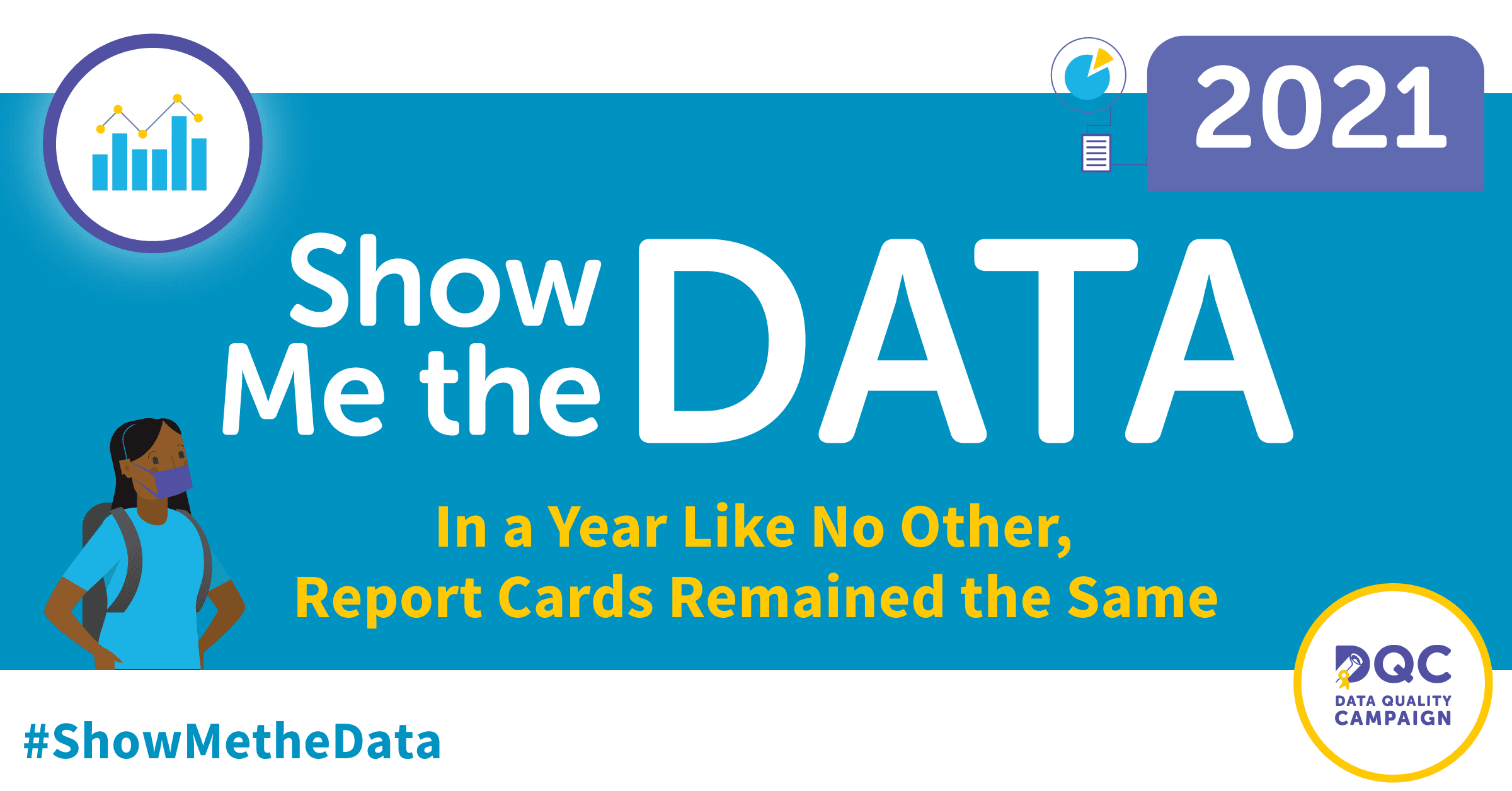Data Quality Campaign’s Show Me the Data 2021 report finds that states missed the opportunity to use report cards as meaningful communications tools in the pandemic
WASHINGTON (May 26, 2021) – A year of education disruption and confusion, the 2019–20 school year should have been a time for states to use report cards to help keep families and the public informed about how the pandemic was affecting student learning. While states received federal waivers and did not conduct statewide assessments in spring 2020, there was data they could have reported—meaningful measures such as chronic absence, graduation rates, and teacher data—but few did.
In our Show Me the Data 2021 report, the Data Quality Campaign (DQC) reviewed report cards from all 50 states and the District of Columbia to see how states are sharing information with the public. This year, DQC also reviewed report cards to see whether states have been using report cards to communicate about disruptions to in-person learning resulting from the COVID-19 pandemic.
“The obstacles facing states, schools, teachers, and students in 2020 were unprecedented and made communication and transparency more important than ever,” said DQC President and CEO Jennifer Bell-Ellwanger. “As a state’s most public-facing resource, report cards should have given families the information they needed. Unfortunately, most families were left in the dark.”
While student achievement data was unavailable, there were other opportunities for states to share meaningful data about student experiences with the public. Unfortunately, states largely did not prioritize sharing this data. As of January 2021, DQC found that:
- While 35 states reported chronic absence data on their most recent report cards from previous years, only 9 states shared that data for the 2019–20 school year.
- Only 32 states reported graduation rates for each federally required group of students. Without assessment data, graduation rates were one of the only comparable, disaggregated indicators that states could report in 2019–20.
- 24 states did not include information on all federally required teacher data (inexperienced teachers, teachers with emergency or provisional credentials, or out-of-field teachers).
Despite largely missing the opportunity to use report cards as a communications tool, there was small, but notable, progress on the data that states made available. These increases are promising, and states still must make progress toward reporting all the required information. DQC’s review found the following improvements this year:
- 36 states included school-level per-pupil expenditures on their report cards, which is up from 19 states the previous year.
- 29 states reported career and technical education (CTE) enrollment or completion, a net increase of 4 states from the previous year.
- 37 states reported postsecondary enrollment; of those, only 14 states reported on postsecondary enrollment in two-year institutions.
- 6 new states reported graduation rates for students experiencing homelessness, and 6 new states reported graduation rates for students in foster care this year. Both of these populations have been heavily impacted by the pandemic, so reporting on historically underserved student groups like these is especially important now.
While some states did provide contextual information to communicate about the COVID-19 pandemic specifically, others added language to their report cards to communicate the impact on data:
- Iowa provided a chart of each indicator included on its report card describing the availability of that data and notes on changes to reporting due to COVID-19. Visitors could clearly read which data was affected and how.
- North Dakota actively used its report card to share how school closures affected student learning with current data. The state’s report card included a COVID-19 response page for each school with data on the number and percentage of students receiving in-person learning, hybrid learning, and virtual learning. The report card also links to each school’s health and safety plan and distance learning plan.
- Pennsylvania used commonly understood warning symbols to indicate which data was affected by school closures and what year the supplemented data was from. Clearly labeling each indicator makes it easy for any user to understand the school year reflected in the report card.
“Report cards are an opportunity for states to communicate and share valuable information with families and communities. Everyone from policymakers to parents needs information that’s easy to find, use, and understand as we seek to grasp how well students and schools are recovering from this time of disruption,” said Bell-Ellwanger. “States missed an opportunity in 2020 to share information but this shouldn’t deter them from continuing to improve their report cards moving forward.”
View the full Show Me the Data 2021 report—including recommendations for how states should continue to improve their report cards and increase transparency—here.
###
Contact: Blair Mann, bmann@dataqualitycampaign.org, 610-724-5914
About the Data Quality Campaign
The Data Quality Campaign is a nonprofit policy and advocacy organization leading the effort to bring every part of the education community together to empower educators, families, and policymakers with quality information to make decisions that ensure that students excel. For more information, go to dataqualitycampaign.org and follow us on Facebook and Twitter (@EdDataCampaign).


